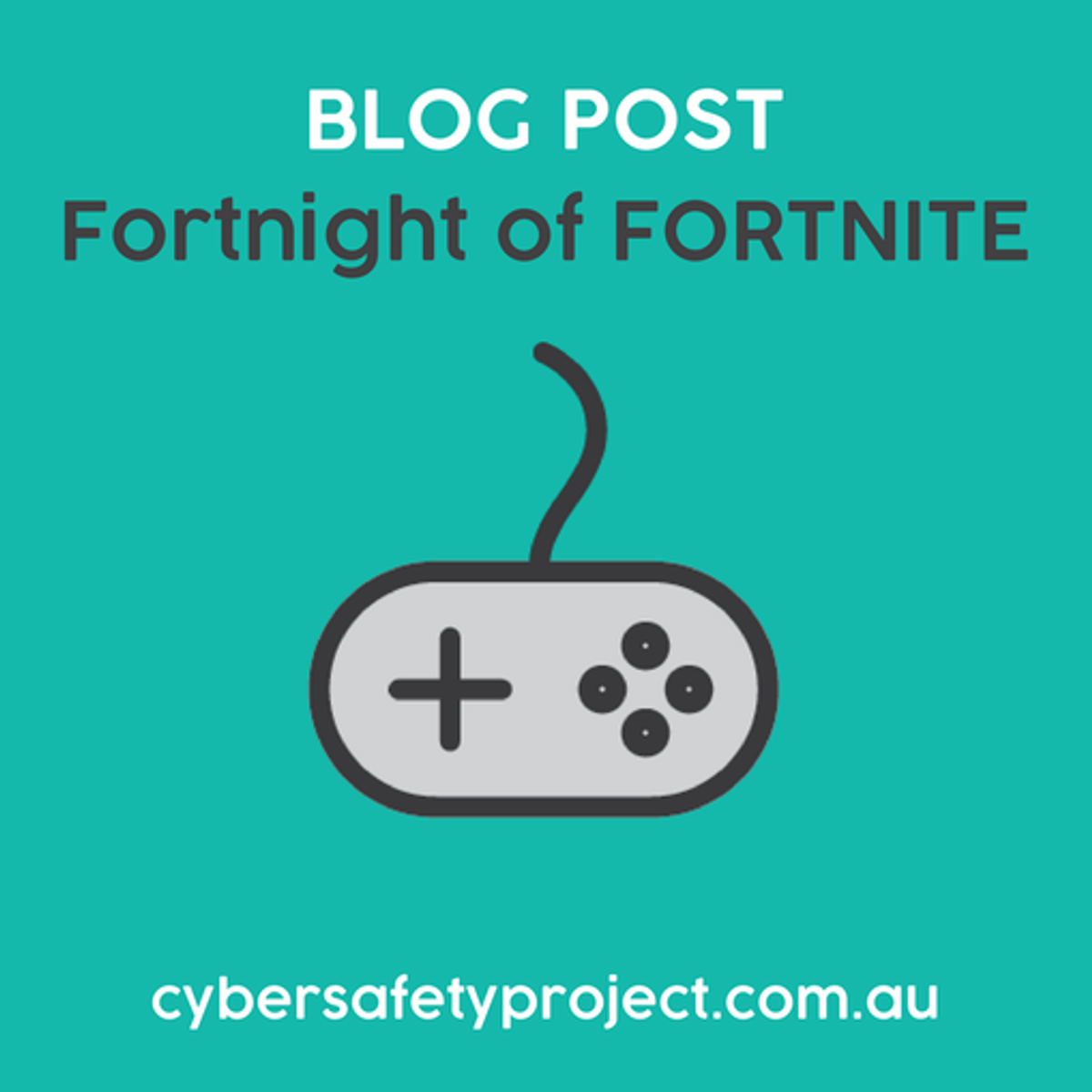E-Learning News

Cyber Safety Article
The craze that is Fortnite: Battle Royale has hit an all-time high during recent months. Released in September 2017, its frenzy and popularity has many parents asking plenty of questions. With school holidays being upon us, it was the perfect fortnight to immerse ourselves in the game Fortnite and learn as much as we could. This blog entry will answer the 3 most common questions, the Cyber Safety Project is being asked by parents about Fortnite and provide some easy to implement tips within your household.
Is there a difference between Fortnite and Fortnite: Battle Royale?
Yes, yes there is! Fortnite is a solo version called Save the World and the massively popular multiplayer version is called Fortnite: Battle Royale. If your kids are asking to play “Fortnite”they're most likely wanting to play Fortnite: Battle Royale version.
The quick summary is that Fortnite: Battle Royale sees up to 100 people participate in a single match together. Players parachute from a party bus onto an island, where they must collect weapons, build structures; all while trying to avoid being killed by other players. While this is going on, a randomly chosen safe zone and moving storm reduces the playing areas within the island and keeps the game moving. All this takes place so that players can ultimately be the last one standing and have “#1 Victory Royale” plastered across the players screen.
Players then quickly reset another match, parachute out of the Party Bus and do it all again and again and again.
Our Top 3 tips for parents whose children are playing Fortnite: Battle Royale are:
- Set limits and monitor how many matches are being played. Use the information available to you to monitor the amounts of games and total time played. Encourage your child to show independence in ‘switching off’ themselves.
- Promote transparency through always ensuring children play in an area of the home where you as a parent can see the screen.
- Discuss associated emotions with your child and ask them how the game play makes them feel. Use the game as an opportunity for your child to learn to regulate their emotions appropriately and practice strategies to manage anger or disappointment after a loss.
For the full article, check out the Cyber Safety newsletter at www.cybersafetyproject.com.au
Miss Melanie Larkin
e-Learning Leader

